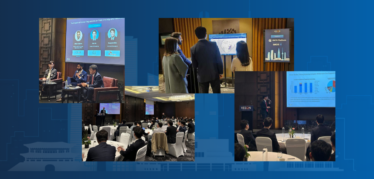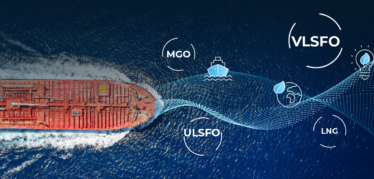The commercial management of cargoes and fleets is a demanding process that requires stakeholders to possess not only an intimate understanding of their own workflows, but also an appreciation for how those processes impact other areas of their business. As with any complicated workflow, it can be easy to get bogged down in maritime shipping’s day-to-day realities, resulting in critical details slipping through the cracks.
Fortunately, digital technologies offer a ready solution in the form of automated tasks and alerts that can be created and deployed based on your unique institutional knowledge and regulatory requirements. These dynamic tasks and alerts can be associated with voyages, cargoes, and time charters spanning any functional area of your organization. In this blog post, we’ll explore some of the ways in which you can utilize tasks and alerts in your business.
Before we get started, let’s quickly differentiate between these two important terms. The term tasks refers to actions that are progressively addressed and completed by users. Think of tasks as virtual do to lists that are dynamically updated and tightly integrated with your daily workflows. The next term, alerts, refers to timely and relevant messages that notify a user of something they may have forgotten, done wrong, or want to know.
Together, integrated tasks and custom alerts act as the guiding rails that standardize and strengthen commercial maritime shipping workflows. They can be applied in a myriad of ways to enhance your business. Let’s take a closer look at three applications of this powerful, user-centered capability.
Ensure Process Sanctity with Custom Alerts
The right digital solution for the commercial management of marine fleets and cargoes affords users the ability to specify precise details related to cargoes, vessels, contracts, and much more. Downstream processes are often highly reliant on these details, so standardization and completion of all required fields is key to maintaining an efficient and effective workflow.
With custom alerts, organizations can ensure the sanctity of the data entry process across all users and functions. When users populate information about specific cargo, for instance, their organization can establish a custom alert to ensure that key fields are included before that user moves on to the next stage in their workflow. This alert helps stabilize organization-wide processes, eliminating the risk of missing data for downstream users and enabling meaningful analysis through comprehensive data.
Establish Best-Practice Workflows with Integrated Tasks
Every organization is different, which means that best practice workflows can vary greatly on an organization-by-organization basis. Efficiency and profitability hinge on the standardization of daily workflows across functions, which is far easier said than done.
With integrated task lists, organizations can build customized, best-practice workflows directly into their digital solution as tasks for users to uphold repeatable, efficient, and effective workflows. For example, a business may want to create a voyage checklist for their operators. Operators, when operating voyages, could then follow along with the custom checklist according to the order and specificity established by the organization, ensuring the standardized and agreed upon voyage operation workflow is followed across all operators, at all times.
Adhere to Regulations and Sanctions Lists, Automatically
Whether moving goods to or from international bodies with their own sets of sanctions and regulations, or working to adhere to strict company compliance within your own organization, maritime shipping businesses are faced with ever-changing regulations that require continuous attention.
With dynamic alerts, organizations can detect potential regulatory and sanction violations before they occur and notify necessary users to take corrective action. Consider, for example, an instance in which a charterer imposes strict sanctions for vessels flying specific flags. With the right digital solution, vessel details, including flags, are entered and stored right in the chartering workspace. If a user were to schedule a vessel flying an inappropriate flag to make a stop at a sanctioned country, the system would immediately signal the violation and, if configured to do so, prevent the finalization of the fixture.
Streamline Your Workflow with VIP
As a dynamic platform for the commercial management of marine fleets and cargoes, the Veson IMOS Platform (VIP) empowers the maritime world’s diverse stakeholders with the information and tools they need to make the right decisions at the right time. VIP pairs proven business logic with an agile, cloud-based architecture that supports the global accessibility, advanced data sharing, and seamless integration required by today’s enterprises on both sides of the marine contract. To learn more about how VIP can empower your organization through integrated tasks and custom alerts, we invite you to watch the on-demand webinar, “Streamline Your Workflow with Tasks & Alerts,” below.
Interested in receiving hands-on training about Tasks & Alerts best practices in VIP from our subject matter experts? Learn more about our upcoming Tasks & Alerts Workshop here.



 Giftson Eliyesar
Giftson Eliyesar
 Hongbeom Park
Hongbeom Park
 Oliver Kirkham
Oliver Kirkham